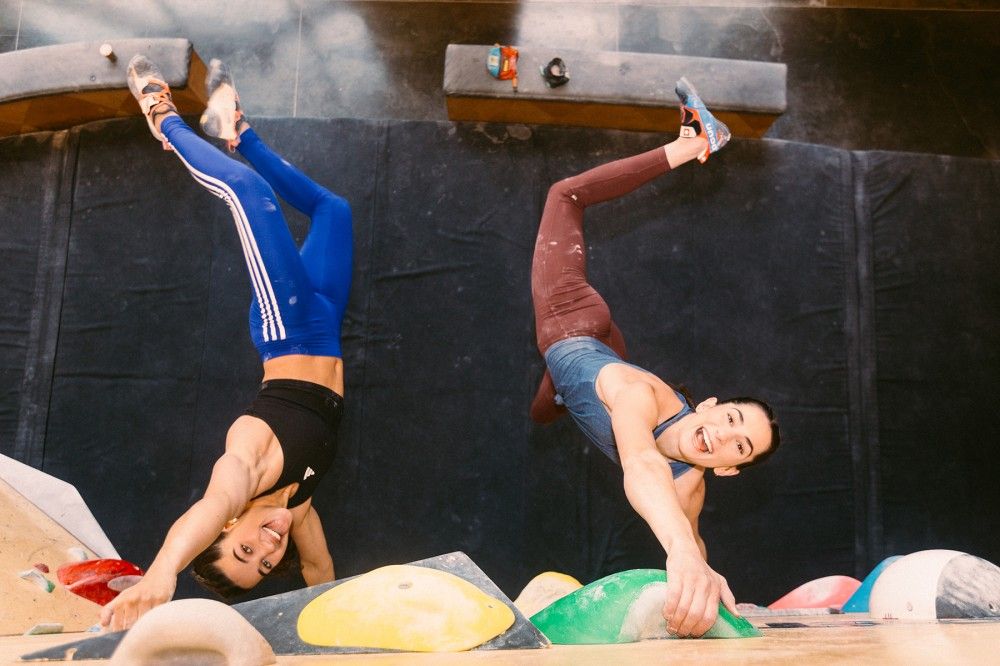
How Rock Climbers Brooke Raboutou and Kyra Condie Are Revolutionizing the Sport
Kyra Condie always climbed: up trees, on top of the refrigerator, in the rafters of her parents’ Twin Cities home. She got hooked on the sport at a birthday party in a gym when she was 11. At 13, her career nearly ended before it began, when she had to have 10 vertebrae fused with metal rods to correct severe scoliosis. The surgery marked a turning point. After, all Condie wanted to do was climb — and be the best. “As soon as I had the idea of climbing being taken away from me,” she says, “all those times going to the gym instead of the park with friends felt worth it.”
The dedication paid off. In 2019, Condie, 23, and her friend of a decade, Brooke Raboutou, 18, qualified as the first American women to compete in Olympic climbing when the sport debuts at the Tokyo games this summer.
Raboutou started young too. She comes from a family of climbers in Boulder, Colorado, where her mom, a former champion, runs a gym. She’s been climbing since before she can remember. Condie noticed her for the first time at a national competition in 2010: “This girl was a lot younger than me, and just crushing everything.”
As the sport has increased in popularity, teenage girls are emerging as its new stars. Their superior weight-to-strength ratio may give them an edge. In 2016, teens swept the women’s national championships, and Raboutou herself set several records before she turned 12. They’re also gaining on men. Last fall, a nine-year-old girl became the youngest person to scale Yosemite’s 3,000-foot rock formation, El Capitan.
At the , climbers will compete in three disciplines: lead climbing, where they ascend as high as possible in six minutes; speed, where two climbers race side by side; and bouldering, where they try to complete the most routes possible of the same wall in four minutes. “It’s not just about being strong,” Raboutou says, “but solving the problems in front of you.”
The preparation is grueling. In Colorado, Raboutou practices for up to 11 hours a day, fine-tuning runs, doing mobility exercises for her shoulders, and to build strength, dangling by three fingers from a ledge . . . and then doing pull-ups. Condie, who trains in Salt Lake City, powers through with a reggaeton playlist.
Inevitably, they face mansplainers. Condie gets plenty of “tips” online (sample comment: “You need to work on getting bigger biceps”), but doesn’t let it get to her. Having Raboutou helps. “In climbing, there’s an amazing community of women who are all superstrong,” she says. “Nobody takes the bullshit.”



